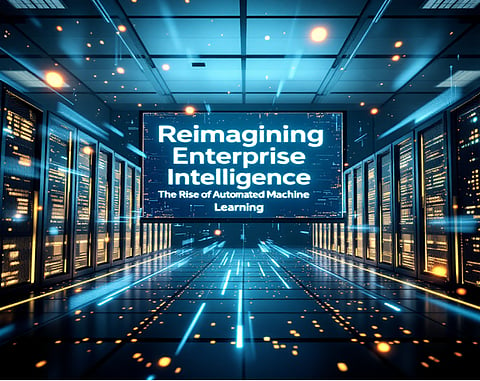

In today’s fast-paced technological environment, organizations are rapidly adopting transformative tools that enhance operational efficiency and democratize data-driven decision-making. One such innovation—automated Machine Learning (Auto ML)—revolutionizes predictive analytics across various industries. Grounded in the expert insights of Suresh Kumar Maddala, a seasoned authority in artificial intelligence systems, this article explores the cutting-edge developments in Auto ML and the pivotal role these advancements play in steering strategic evolution within enterprise ecosystems. From foundational technologies to emerging trends, we delve into how Auto ML is reshaping the future of intelligent automation.
Traditional machine learning development often demands specialized expertise, extended timelines, and substantial computational resources. Auto ML disrupts this model by automating critical tasks—from data preprocessing to algorithm selection—creating streamlined workflows that reduce development cycles by up to 80%. By offloading repetitive tasks to automation, organizations enable data science teams to concentrate on strategic initiatives, amplifying both speed and scope in predictive model development.
One of Auto ML's most profound impacts is its ability to democratize access to advanced analytics. By simplifying complex processes through intuitive interfaces and guided workflows, Auto ML empowers non-specialists, like business analysts and domain experts, to create robust models. This democratization unlocks organizational potential by placing the power of prediction in the hands of those closest to operational challenges, reducing dependence on data science bottlenecks, and fostering innovation at all levels.
Modern Auto ML platforms have evolved from narrow automation tools into comprehensive ecosystems. Early systems like Auto-WEKA focused on algorithm optimization but lacked broader integration. More advanced tools like Auto AI and Neural Network Intelligence now offer end-to-end automation, explainability features, and modular extensibility. Each framework brings distinct strengths: one excels in regulated environments, another in deep learning flexibility, emphasizing that successful enterprise adoption hinges on aligning tool capabilities with specific organizational needs.
Deploying Auto ML effectively requires careful alignment with existing IT infrastructure. Cloud-native implementations offer scalability but may introduce data sovereignty concerns. Conversely, on-premises setups offer control but demand more resources. Hybrid models, utilizing containerized environments, are emerging as ideal solutions, balancing flexibility, security, and performance. Beyond infrastructure, organizations must also ensure data governance readiness, enabling smooth, compliant model lifecycle management across departments.
Despite all of these great possibilities, Auto ML has some challenges. Most importantly, there is still the aspect of interpretability, the very thing that is required in certain sectors from a transparency standpoint. When implementing any algorithm, the data quality can affect the performance, with worse data equaling worse performance. Factors such as domain-specific customization requirements and how technical debt is accumulated should also be considered. It should be clear that explainable AI must be incorporated with an appropriate data quality monitor embedded in a model governance framework that meets the maturity and regulatory context of the organization.
Auto ML has been extending beyond the traditional environments of IT into edge computing and federated learning. The Auto ML frameworks optimize for models to be deployed in constrained environments, like the IoT and mobile devices, under edge scenarios. Federated learning allows for decentralized training of the model without sacrificing data privacy, relevant in areas like healthcare and finance. Both of these advances position Auto ML as a major dimension of enterprise AI eventually and enhance the flexibility, responsiveness, and compliance of decentralized digital ecosystems.
Return on investment in Auto Machine Learning is multifarious. Organizations see faster releases, broad deployment of their models, and less scarcity of specialized talent. However, a strong quandary for competition remains in its strategic use: installation into core offerings or core operations instead of standing alone. When maturing to full potential, the greatest transformation will come from the actual meld of automation with human insight, allowing analytics to evolve from a support function to a strategic driver.
The rise of Auto ML does not imply a consequent extinction of the data scientist. Rather, it transforms the relations of Auto ML with other human agents; the focus shifts from tuning a model to high-level problem-solving, oversight, and ethical governance. Conjointly, organizations must establish their cross-functional fluency by training business users who can utilize Auto ML responsibly. The most cutting-edge companies are experimenting with hybrid job roles that combine domain expertise and AI fluency so that these flexible teams can innovate through co-intelligence.
In conclusion, Suresh Kumar Maddala emphasizes that the emergence of Auto ML for predictive enterprise systems brings in more than a technological change—it rather represents a paradigm shift in how organizations make use of data for decision-making. Auto ML, by fast-tracking decision-making while being all-encompassing and intelligent, provides the present agility and foresight in strategy. Coming to use its full potential remains with organizations in the balance between automation and human expertise, structure and adaptability, innovation, and governance. In his view, a future is illuminated wherein Auto ML enhances enterprise capacities and breeds intelligent, responsive, and sustainable growth.
